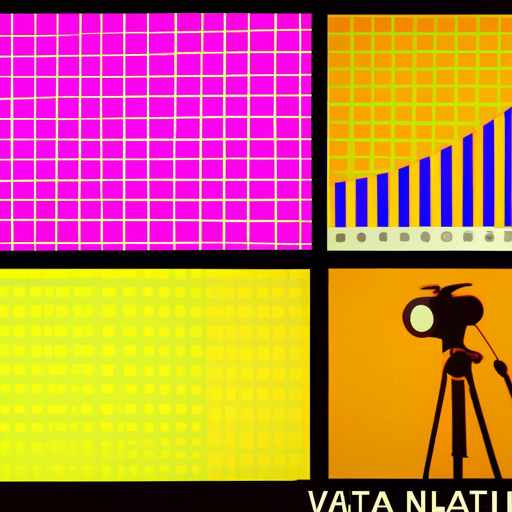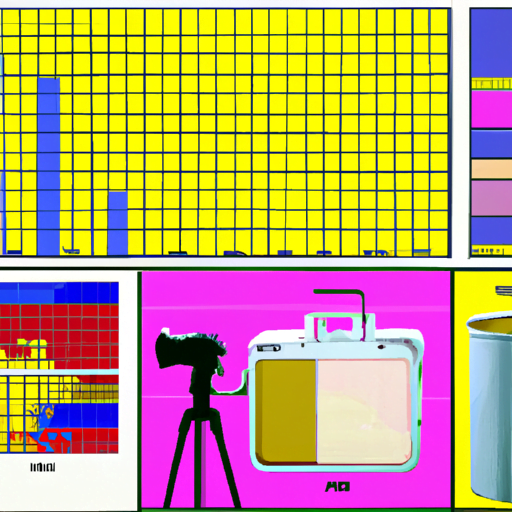
-
Table of Contents
- Visualizing Data: The Art of Data Visualization
- The Importance of Data Visualization
- Techniques for Effective Data Visualization
- 1. Choose the Right Visualization Type
- 2. Simplify and Focus
- 3. Use Color and Contrast Effectively
- 4. Incorporate Interactivity
- 5. Tell a Story
- Real-World Applications of Data Visualization
- 1. Business Analytics
- 2. Public Health
- 3. Journalism
- 4. Urban Planning
- Summary
Visualizing Data: The Art of Data Visualization

Data visualization is the process of representing data in a visual format, such as charts, graphs, and maps, to help people understand and interpret complex information more easily. It is a powerful tool that allows us to explore patterns, trends, and relationships within data, enabling us to make informed decisions and communicate insights effectively. In this article, we will delve into the art of data visualization, exploring its importance, techniques, and real-world applications.
The Importance of Data Visualization
Data visualization plays a crucial role in today’s data-driven world. Here are some key reasons why it is important:
- Enhances Understanding: Visual representations of data make it easier for our brains to process and comprehend information. By presenting complex data in a visual format, we can quickly identify patterns, outliers, and correlations that may not be apparent in raw data.
- Aids Decision Making: Data visualization helps us make better decisions by providing a clear and concise representation of information. It allows us to identify trends, spot anomalies, and draw insights that can guide strategic planning and problem-solving.
- Improves Communication: Visualizations are a universal language that can be easily understood by people from different backgrounds. They enable effective communication of data-driven insights to stakeholders, clients, and the general public.
- Engages the Audience: Well-designed visualizations capture attention and engage the audience. They can evoke emotions, tell stories, and create memorable experiences that leave a lasting impact.
Techniques for Effective Data Visualization
Creating effective data visualizations requires a combination of design principles, data analysis, and storytelling. Here are some techniques to consider:
1. Choose the Right Visualization Type
There are various types of visualizations, including bar charts, line graphs, scatter plots, heatmaps, and more. Selecting the appropriate visualization type depends on the nature of the data and the insights you want to convey. For example, if you want to compare categorical data, a bar chart may be more suitable, while a line graph is ideal for showing trends over time.
2. Simplify and Focus
Avoid cluttering your visualizations with unnecessary elements. Simplify the design by removing non-essential components and focusing on the key message you want to convey. Use clear labels, titles, and legends to guide the audience and ensure they understand the information being presented.
3. Use Color and Contrast Effectively
Color can be a powerful tool in data visualization, but it should be used judiciously. Choose a color palette that enhances readability and conveys meaning. Use contrasting colors to highlight important data points or to differentiate between different categories. Be mindful of colorblindness and ensure your visualizations are accessible to all users.
4. Incorporate Interactivity
Interactive visualizations allow users to explore data at their own pace and gain deeper insights. Consider adding interactive elements such as tooltips, filters, and zooming capabilities to enable users to interact with the data and uncover hidden patterns or details.
5. Tell a Story
Data visualization is not just about presenting numbers and charts; it is about telling a story. Structure your visualizations in a narrative format that guides the audience through the data, highlighting key points and drawing conclusions. Use annotations, captions, and annotations to provide context and guide the viewer’s attention.
Real-World Applications of Data Visualization
Data visualization finds applications in various fields, from business and finance to healthcare and journalism. Here are a few examples:
1. Business Analytics
Data visualization is widely used in business analytics to analyze sales data, customer behavior, and market trends. Visualizations help identify opportunities for growth, optimize operations, and make data-driven decisions.
2. Public Health
Data visualization plays a crucial role in public health by helping researchers and policymakers understand disease patterns, track outbreaks, and monitor the effectiveness of interventions. Visualizations can communicate complex health data to the general public, empowering them to make informed decisions about their well-being.
3. Journalism
Data visualization has become an integral part of journalism, enabling journalists to present complex information in a visually compelling and accessible way. Visualizations help tell stories, uncover hidden trends, and provide evidence-based reporting.
4. Urban Planning
Data visualization is used in urban planning to analyze population density, traffic patterns, and infrastructure requirements. Visualizations help planners make informed decisions about land use, transportation, and resource allocation.
Summary
Data visualization is a powerful tool that enhances understanding, aids decision making, improves communication, and engages the audience. By choosing the right visualization type, simplifying the design, using color effectively, incorporating interactivity, and telling a story, we can create compelling visualizations that convey insights effectively. Data visualization finds applications in various fields, including business analytics, public health, journalism, and urban planning. Embracing the art of data visualization allows us to unlock the full potential of data and make informed decisions in an increasingly data-driven world.
